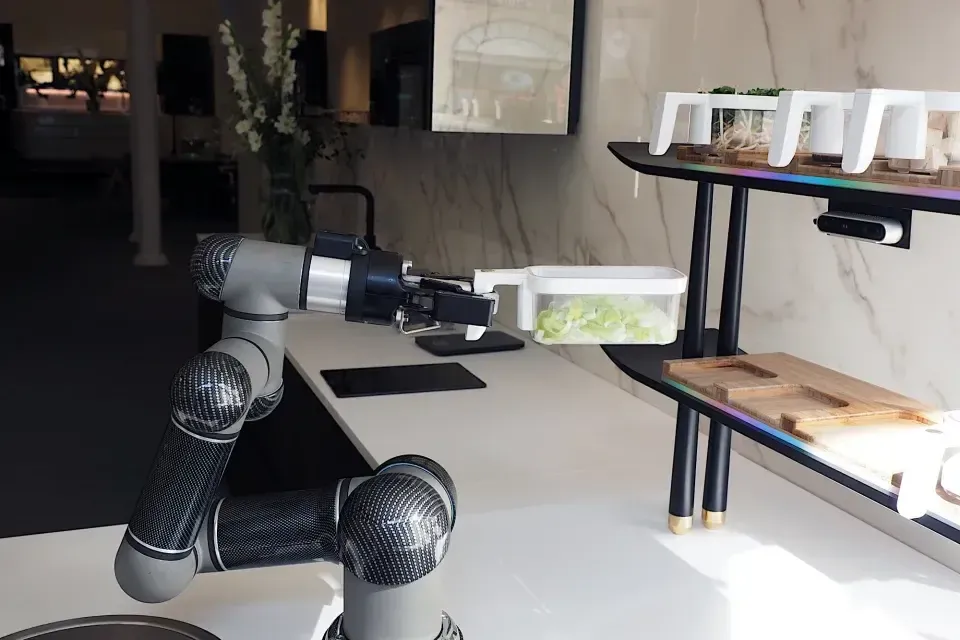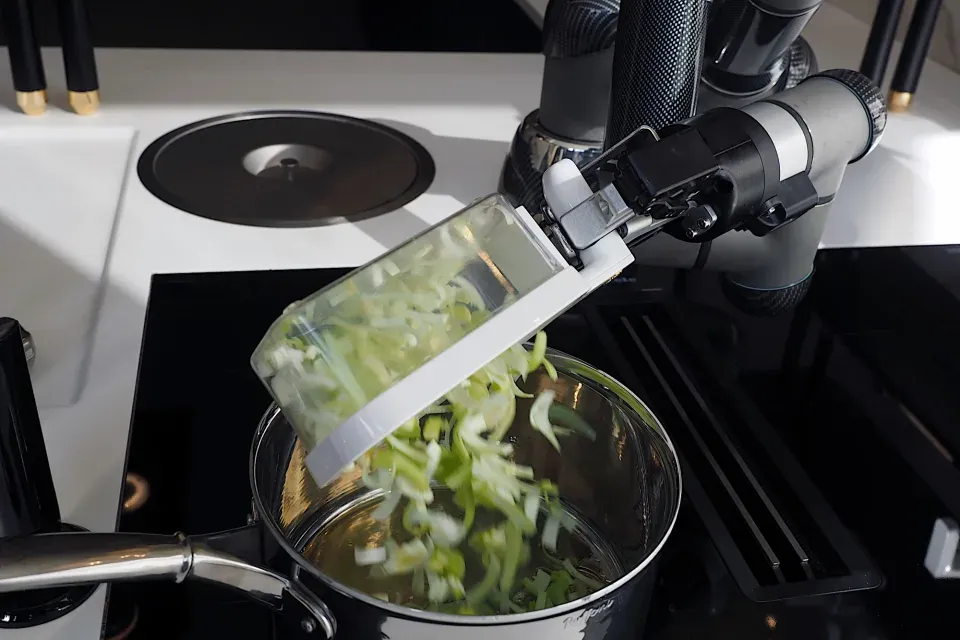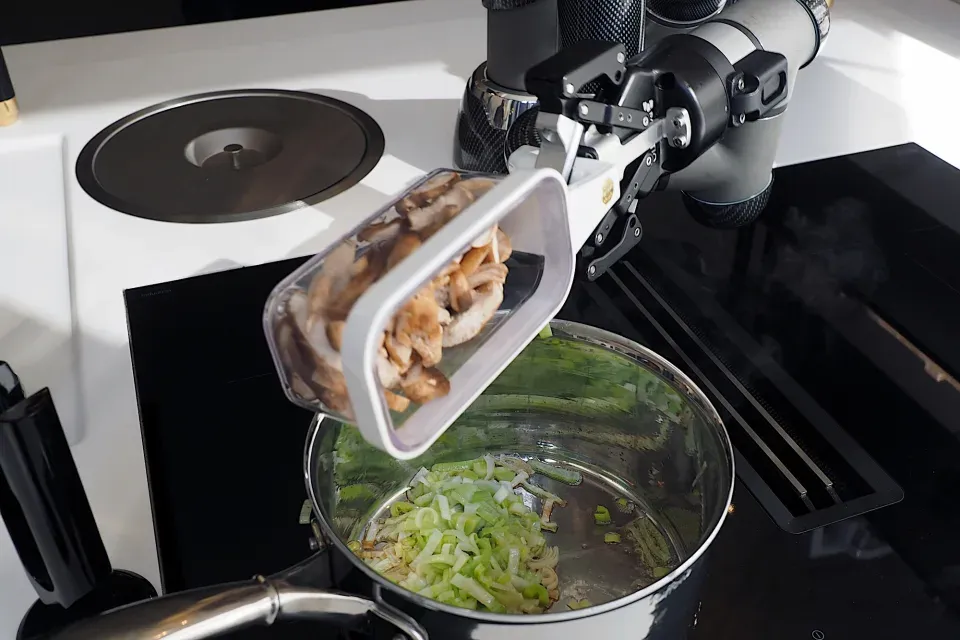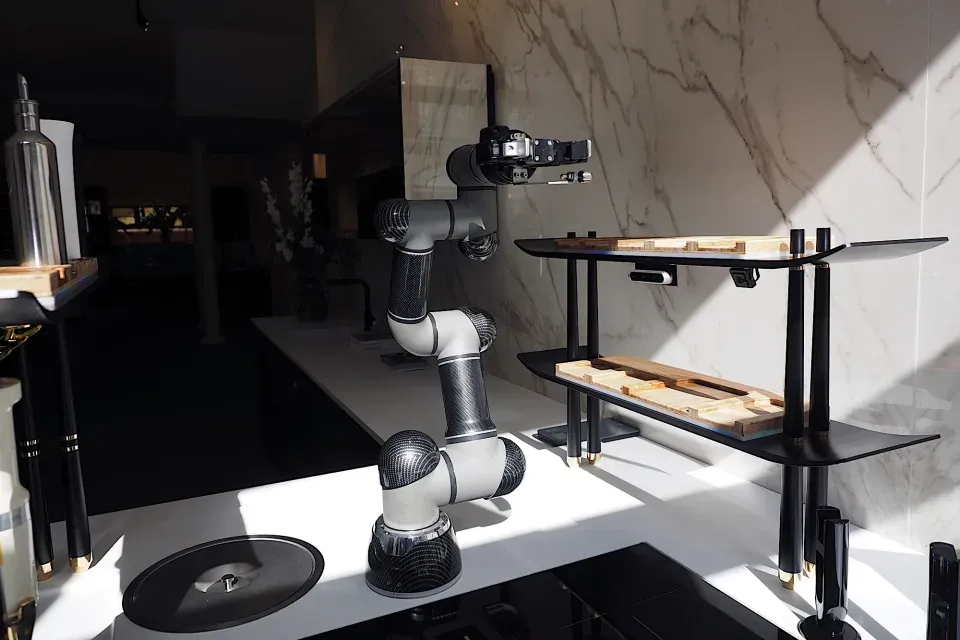A robot in the kitchen—that's something you don't see every day, but surely we should have seen this coming. X-AiR robot designed by Moley Robotics is made to [sort of] do all your cooking. It does have some limitations, though, including it's whooping cost of $105,000.

One idea behind such a robot would be for those that do not have the time to make food, like after a long day at work. It's much more convenient to choose a dish on the controls and have it do all the cooking.
The founder, Dr. Mark Oleynik, had the idea of helping people eat better and rely more on fresh food rather than preservatives [on foods to eat later]. Automating fresh cooking, he thinks, could greatly reduce dependence on processed foods.
There was an earlier version of the robot—a two-armed type that costs nearly $330,000—something that was even way too high for the calibre of people it was designed for. So a much simpler, stripped-down version that has a single arm was designed.

There are three sections to the robot that all contribute to its overall estimated cost of around $105,000. The robot arm (X-AiR), a control tablet, and specific kitchen fixtures. To have it functional, you'll need a new tabletop, custom shelving units, and a cooktop.
X-AiR doesn't have a native vision system to allow it to sense and engage with its environment, so it moves around with memory of its surroundings, like where the ingredients, pots, and untensils should be. That is, you would have to have already prepared the ingredients and placed them at designated positions for the robot to grab and effectively do the cooking.

Moley has its own in-house chef, James Taylor, who adapts each recipe so it can be made by a one-armed robot. The company says it hopes to add two or three new recipes each month and that if you have a family dish you’d love to see automated, you can send it in. Oleynik said the movements are mapped onto the robot after watching a human chef prepare the same meal. And that, once it had learnt what to do, the robot would be far less error-prone than its human counterpart. ~ Engadget
Having the robot do all the cooking does sound like a fancy idea, but someone has to do the preparation of the ingredients if the robot is unable to do it. And it makes one wonder, really, "Is it really worth it?" I mean, the interesting part of cooking, if there's any, would be the actually cooking and not peeling the potatoes or grating the carrots, or even the teary experience of dicing onions.
It would all be too complicated to design such a robot to also do the preparation. There are far too many variables to consider. And also, putting blades onto a robot is a risky and dangerous deal.

Another limitation is how you can't really make immediate modifications to the meal. You may not have an ingredient missing—it would only not know that it's absent—but you can't just include a new ingredient for it to factor in. It's not smart. Just an automated system.
On the bright side, since people that can afford it are likely to always have the right ingredients for their dishes, it could be a win situation for them to be able to save time when they are busy.
If, however, it is only an automated system—not one that has vision or adequate sensors to adapt to changes and obtain feedback from its environment—there could be potential mistakes during cooking. And clearly, zero preparation means no cooking, and the robot just sits idle.

Monitise your content on Hive via InLeo and truly own your account. Create your free account in a few minutes here! Here's a navigation guide.
All images from Engadget